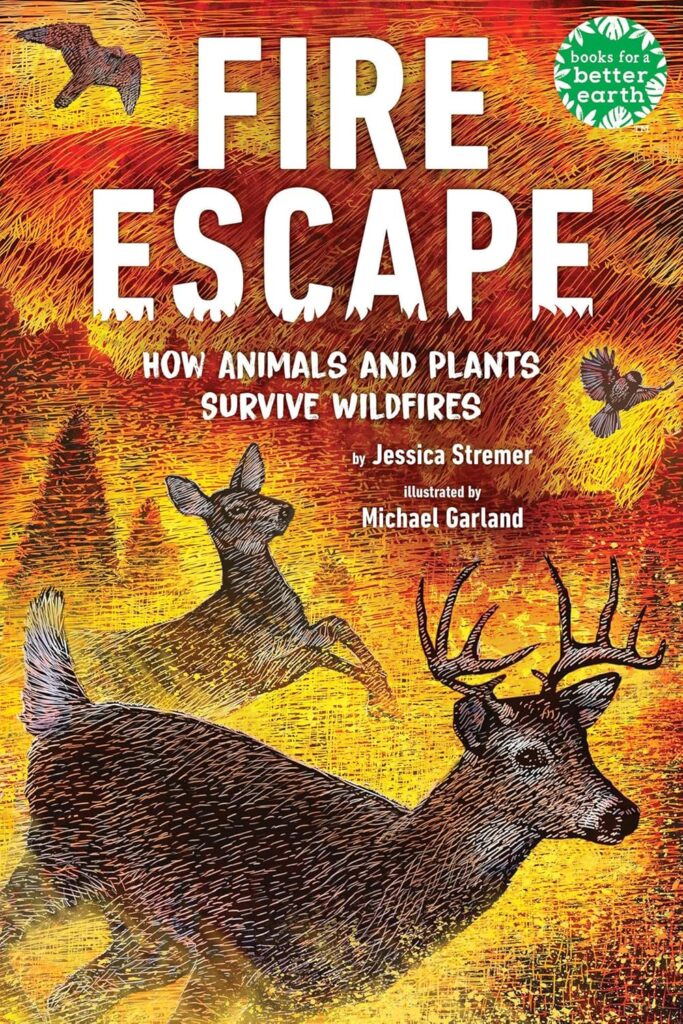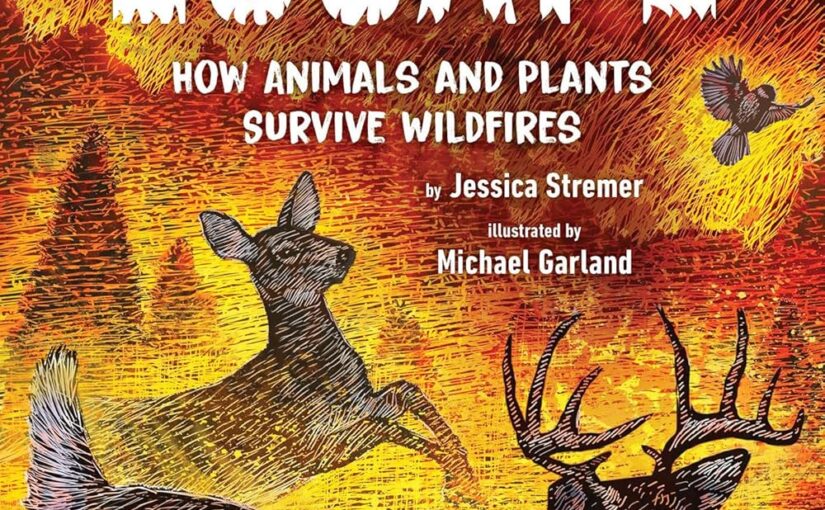Children’s books can be for the curious, or the mandated. Unfortunately, elementary and middle school ages often engage in books because of the former. However, it’s those curious kids, the ones who have a basic interest in a subject and want to learn more about it, that are laying the seeds for future success at a higher level. That’s a challenging lesson to impart to younger readers for sure. Fire Escape: How Animals and Plants Survive Wildfires is a chapter book aimed at middle school readers who are smart enough to realize that fire does not always equal total devastation and that life finds a way.

That quote from Jurassic Park is so timeless, isn’t it? When our eldest, now teenage son was five-years-old he was watching a nature documentary about dinosaurs. The scene cut to a cgi-dinosaur eating something that it had just chased down and killed. We hesitated for a moment and asked him if it bothered him and he said, “It’s just nature.” Fire Escape takes the same tact as our erstwhile naturalist and deals exclusively with the facts. In a book that could’ve been preachy about global warming, climate change or the impact that humans have on wildfires, this book plays it straight and down the information center.
If it were a traffic accident, it would focus on the lives of those involved, what brought them to the intersection, the geography around it, the condition of the asphalt, and how they dealt with things after the collision. Almost every two-page spread has an illustration or photograph that helps readers understand the topic. It might be an illustration of a beaver walking on top of their dam or a photograph of a deer prancing through a forest that had been badly burned, but is now recovering.
The title of that particular sub-chapter is Moving On, and introduces the practice of different parts of the forest burning at different times. It then goes on to explain how a square, or patchwork area of a forest might not burn all at the same time. The area that’s not actively burning can be shelter to those critters that can’t burrow underground. Unfortunately, those pages lead directly into the next chapter which is all about megafires. These are the fast-burning beasts that have higher temperatures and are nearly impossible to control. The Big Burn of 1910 is when there wasn’t any rain in the Montana, Washington and Idaho area, which left the ground parched and countless trees brittle and ripe for the environment.
There were dozens of little fires that merged and created that mega-fire that destroyed anything in its path. It wasn’t until a sustained rainfall happened that the fire was able to be managed. In its wake, the Forest Service realized the importance of controlled burns that destroyed the fuel that wildfires would use in an uncontrolled way. This led to better messaging, the creation of Smokey Bear and his “Only You Can Prevent Forest Fires” slogan.
Fire Escape: How Animals and Plants Survive Wildfires is a book that’s easy to learn from. It’s an effortless read that grades six through eight will fall into and find themselves spouting factoids about fires to anyone who will listen. Even though this is an easy book to read, it’s not a book that reluctant readers will embrace. That’s due to the fact that reluctant readers need a little sugar or kawaii in order to tempt them into reading. In this case, Fire Escape: How Animals and Plants Survive Wildfires is the non-fiction, middle school book that you need to read, but doesn’t have a song and dance in order to lure in readers. It’s a fun, engaging book once you dig into the meat of it, but you’ve got to be curious about wildfires, ecology or non-fiction matters to get you through the door.
Fire Escape: How Animals and Plants Survive Wildfires is by Jessica Stremer with illustrations by Michael Garland and is available on Holiday House.
There are affiliate links in this post.





 Facebook
Facebook Twitter
Twitter Flickr
Flickr GooglePlus
GooglePlus Youtube
Youtube